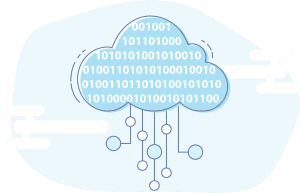What Is VBP?
Value Based Purchasing (VBP) is an alternative payment model strategy used by purchasers to promote quality and value of health care services. The Goals of VBP are improving the experience of care, improving the health of populations, reducing the per capita cost of health care.
In the human services space, VBP helps to reduce inappropriate and unnecessary care, identify and reward the best performing providers, and is a driver to improve and achieve the CMS Triple Aim by aligning payments to actual positive quality outcomes and incentivizing quality service.

Data Collection and Metric Monitoring Strategies
There are typically 5 components of VBP Programs implemented by organizations:
- Metric Identification
- Data Collection
- Data Tracking
- Data Analysis
- Campaigns & Interventions
Metric Identification
Quality Metrics typically tracked by provider organizations falls under the following Domains of Care:
| Domain of Care | Quality Metric Example |
| Effectiveness of Care | Bladder and Bowel Continence Falls Risk |
| Access/Availability of Care | Implementation of Personal Safeguards Transitioning to a More Integrated Setting |
| Satisfaction with the Experience of Care Provided | Rating |
| Use of Service | Number of people employed at minimum-wage or above Vocational training enrollment |
Data Collection Plan and Hurdles
There are potential hurdles that come with collecting data. In this section, we’ve addressed different types of hurdles and strategies to mitigate the issues.
- Identify metrics to track as an organization
- Identify Data needed for each metric
- Data to be captured, Coding systems to be used etc.
- Identify Data Sources/Systems for each data element
- Need to make sure the systems identified as the data source have the required functionality/forms/data structure to store the data required
- Automate data exchanges between systems
- Electronic Integration to aggregate data from multiple sources to create a comprehensive data set for reporting analytics
| Data Hurdle Type | Example | Mitigation/Long Term Strategy |
| Data not captured in electronic systems | New care manager doesn’t have access to data once transitioned to managed care | Workflow changes EHR feature enhancements |
| Data not available from community | Job performance data | Workflow changes EHR feature enhancements Data Interfacing |
| Data captured as unstructured text | Falls risk captured as part of the visit notes | Workflow changes EHR feature enhancements Additional end user training |
| Data captured discretely but with incorrect coding standards | BMI stored without the correct code | Workflow changes EHR feature enhancements Data transformations |
| Historical data not available | Personal Outcome Measures from 5 years ago not available | Workflow changes EHR feature enhancements Targeted data capture/loads |
| Data not available in time | Claims data is typically 45-60 days delayed | Manual data mining from EHR |
Data Insights
Organizations employ a variety of ways to slice and dice data collected in electronic systems to gain insights in their data. Some of the common ways to analyze data to gain insights include:
- How is the metric trending over time?
- Month over Month, Year over Year
- How is the metric performance for cohorts of individuals? (i.e. residential settings, diagnosis, age)
- Identify patterns to focus on improvements
- Are there any service provider trends?
- Would additional education/training help?
- Any patterns based on the individual’s location?
- Identify additional resource requirements in specific geographic regions (i.e. access to transportation or provider network that doesn’t provide certain services in a rural area)
Campaigns and Interventions
The key to success is to be able to make these data insights actionable to help the organizations improve their processes to achieve better outcomes. Examples of strategies leveraged by organizations include:
- Transitional care follow ups
- Visit from care manager
- Follow up from employment coach
- Telephone calls to schedule appointments – annual visits etc.
- Access to educational information/ opportunities – nutrition, volunteering, self-advocacy etc.
Health IT Considerations
A key part of the overall strategy for organizations as they move towards Value Based Purchasing is to identify and leverage technology solutions early to help navigate the quality & performance requirements and employ processes to improve the overall outcomes of their populations. This includes identifying electronic systems with comprehensive integration, analytics, and intervention capabilities as well as taking the role of an engaged & informed stakeholder of the regulatory & technology environment related to VBP.








